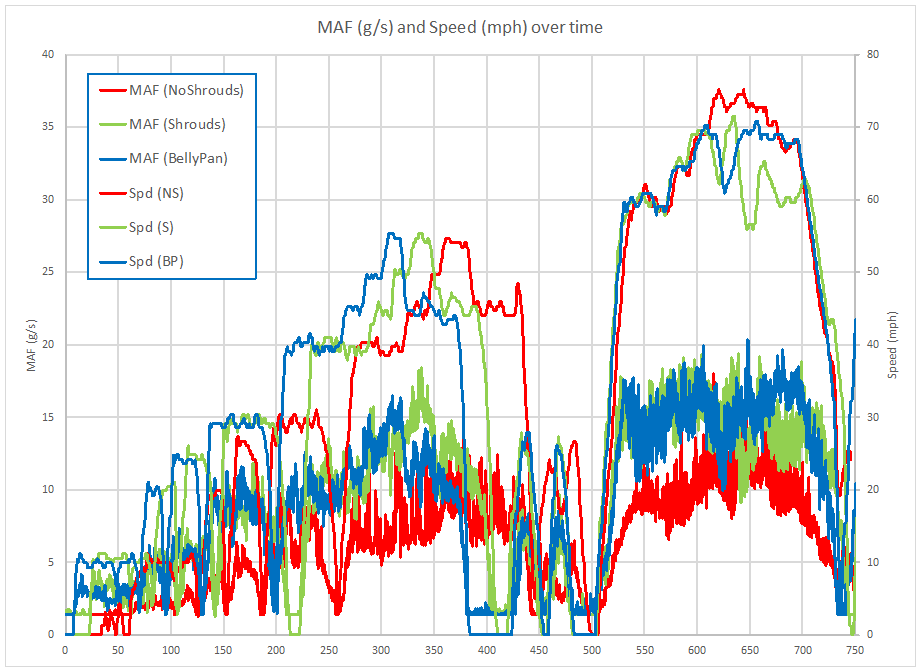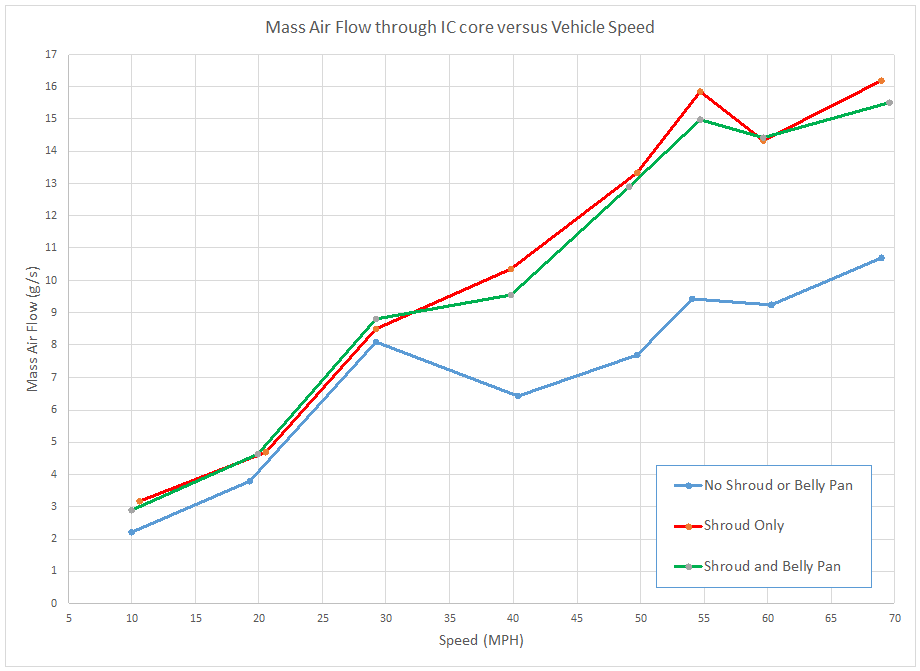Following up on the initial results that were recorded to assess the mass air flow through a portion of the intercooler core. The raw data included various speed changes and spanned several minutes worth of driving, both of which made comparing the different configuration results challenging.

Presented below is data that has been sifted through to extract specific conditions so as to allow a direct comparison of like cases.
For each speed I found the median value for the time period that the speed was being held, and for the accompanying MAF readings I also found the median value. These are presented on the chart as discrete points and then connected by lines to help with illustrating the trend.
It can bee seen that there is some variances in speed between the different conditions, i.e. one case may have a median speed of 39.8 mph while a comparison case has a median value of 40.4 mph. Holding the exact same speed on the road at different times would be hard achieve and I believe the results are close enough to represent the underlying truth values.
The chart illustrates a couple of interesting points.
- That the addition of the shrouds improves the mass airflow through the section of the core that the MAF is located behind.
- Going from 30 to 40 mph for the case without shrouds shows a drop in mass air flow. (Air flow into the area forward of the IC core or pressure behind the core is likely being disrupted by some interaction with another part of the vehicle.)
- Even at 50 mph the case without shrouds has not recovered to the air flow rate recorded at 30 mph.
- All test cases show a drop in air flow going from 55 to 60 mph. (This is likely another secondary interaction that is impacting the air flowing through the core.)
- All three cases show roughly the same increase in air flow through the core versus speed increase. If the 30-40 mph drop in the case of the “No Shrouds” had not occurred the rate of increase in mass air flow rate would have mirrored the other two cases closely.
- Above 30 mph the absence of the belly pan appears to have improved airflow through the IC core.
Conclusion:
These results show a clear benefit to having the shrouds installed for increasing mass air flow through the section of the intercooler core where the MAF sensor and housing were placed.
The results don’t give any indication as to the affect of mass air flow rate on intercooler performance, and subsequently the charge air intake temperature. It is possible that a mass air flow rate of 5 g/s is adequate to transfer away the maximum amount of heat available across the core fins and that additional air flow in excess of that amount is unusable, therefore not decreasing the intake air temperature any further.

